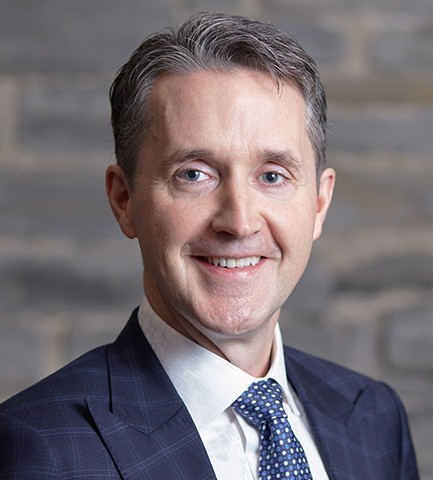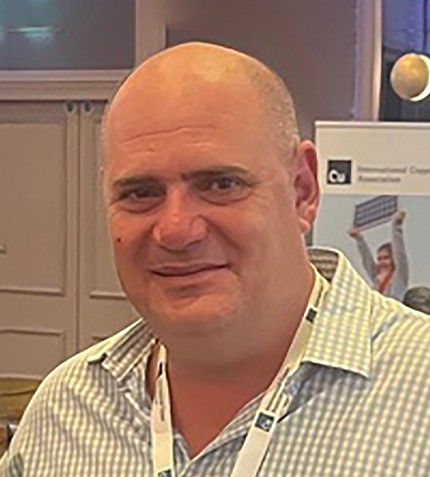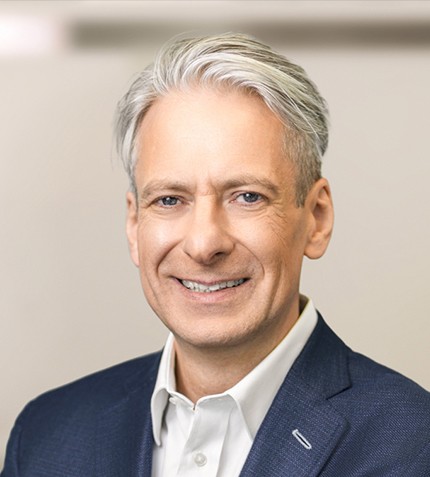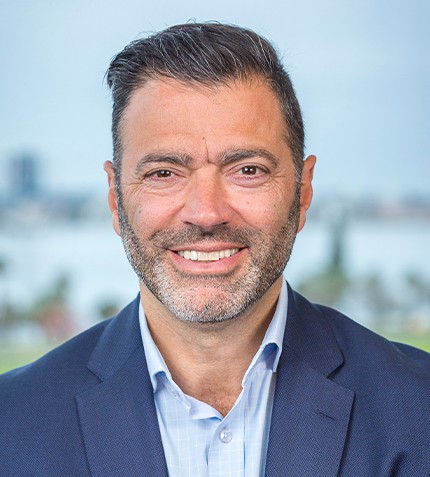
"We have all the ingredients to become a one-stop-shop for cathode material and battery recycling, the only one of its kind in North America."
Trent Mell
PRESIDENT & CEO, ELECTRA BATTERY MATERIALS
Why did you decide to change names from First Cobalt to Electra Battery Materials Corporation?
We want to capitalize on our Battery Materials Park strategy for Canada and North America. Our refinery is one of a kind on the continent and we are now fully financed to expand and commission our refinery to produce battery-grade cobalt. This first phase will be commissioned in Q4 2022, and at full operation will produce 25,000 tonnes of cobalt sulphate per year. We are already advancing work on Phase 2, which will entail recycling lithium-ion batteries. After batteries are disassembled, the cathode and anode material are crushed into a fine material known as black mass, which must be further beneficiated through smelting or refining. The way of the future is to refine it in a hydrometallurgical facility such as ours, owing to superior ESG metrics and better metal recoveries. We have a first mover advantage given that our facility is permitted and largely built. The third phase of our growth is to produce nickel sulphate, another raw material for lithium-ion cathodes that is currently not produced in North America. This step is likely 3-4 years away and would entail building an adjacent plant producing four times more nickel than cobalt, given the widespread adoption of nickel-rich cathodes for long-range vehicles. If we can do all of this, we have all the ingredients to become a one-stop-shop for cathode material and battery recycling, the only one of its kind in North America. This same business plan was implemented in China and Finland, and it attracted the next step of the battery manufacturing chain – precursor production – to co-locate and capture operational and logistical efficiencies.
As we look toward an ambitious future, we are laser-focused on executing Phase 1 in 2022 and making our way to production and first cash flow.
What are you hoping to achieve with the Electra Battery Materials Corporation plant?
Our hydrometallurgical facility has a 10-year operating history with a replacement value of approximately US$100 million. More importantly, we have permits already in place which gives us a multi-year advantage over a greenfield project. An independent life-cycle assessment demonstrated that our greenhouse gas levels (GHGs) will be 51% lower than peer operations in China, in part because we are on a clean, hydroelectric grid.
Over the last six months we have quietly grown our footprint from 120 acres to over 600 acres to ensure that we have sufficient real estate for an industrial complex. We already have the water pipeline, roads, and power in place, and we are situated north of Toronto in the mining corridor between Sudbury and Timmins which is rich with skilled talent, contractors and suppliers. All these ingredients have given us a head start and anybody trying to replicate us is going to be five years behind.
How will demand for cobalt change in upcoming years and how will it be impacted by LFPs?
Cobalt demand will be driven by lithium batteries, particularly by electric vehicles (EV) demand growth, but also mobile electronics, motorcycles, bicycles, power tools, maritime and aviation applications, stationary storage and a whole range of industrial and consumer applications in which lithium-ion batteries have previously been absent. Today, lithium-ion batteries represent more than 50% of global cobalt demand. Laptops, cell phones, power tools and other portable electronics was the largest segment until 2020, and now EVs make up the greatest share.
As cathode chemistries have evolved, we have seen a decrease in the amount of cobalt required per kwh of battery. This has sometimes been mischaracterized as signaling the removal of cobalt entirely from the battery, but the investment decisions of the battery makers reveal that risk to the integrity of the battery are too high. Moreover, larger vehicles, longer ranges and higher EV penetration rates translate into a projected CAGR for cobalt in the battery segment of 19% through 2030. Lithium-iron-phosphate (LFP) batteries are made without nickel or cobalt, but this chemistry has been confined to entry level, short-range vehicles. While the reliability of LFP has improved, it is not likely to be widely adopted in the West, where consumers value longer range options relative to Chinese buyers. Nickel and cobalt bearing cathodes are thus projected to make up 80% of the EV market by 2030.
What is your approach to ESG and how can companies achieve the lowest carbon emissions possible?
London-based Minviro used our feasibility study and underlying data to estimate what our environmental footprint would be once in operation, and we were very pleased with the outcome. We believe that our refinery will have the most sustainable cobalt product in the world based not only on an ultra-low carbon footprint but also due to our supply chain sourcing strategy, eutrophication potential, water consumption and several other metrics. In the race towards carbon neutrality, Electra will be a leader, in no small part due to the clean electric grid we draw power from. We need to quantify that, and we will, but I am weary of many corporate claims of being or aspiring to be net zero or carbon neutral. These statements need to be backed by one of several frameworks, with a clear roadmap on how this will be achieved. Industrial activity will always have a footprint, which we need to minimize and offset. We consider ourselves an ultra-low carbon company, but we have yet to articulate what our journey to net zero will look like. This will be a priority in 2022. Bold statements do not mean much if you cannot put numbers to them.
I believe that companies like us in the battery materials space will be ESG leaders. The reason for this is that we are not selling a commodity but rather an input made to spec to an industrial user. We are part of a supply chain, the EV supply chain, that is committed to measuring the carbon footprint of vehicles from the mine site through to end-of-life battery recycling. We are collectively responsible for tracking, measuring and ultimately reducing our carbon footprint with the shared vision of a mobility revolution committed to a greener planet.










